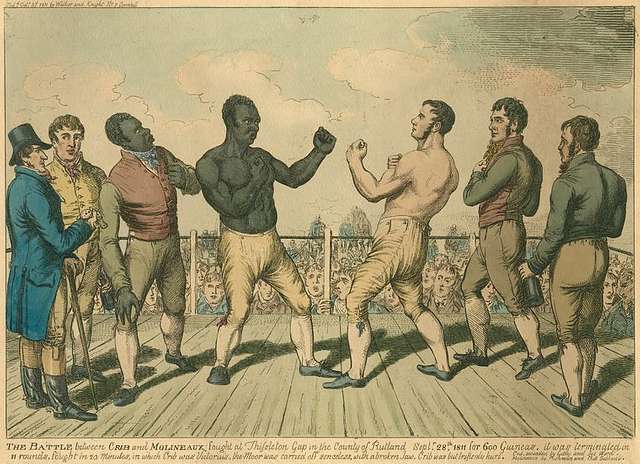Before gloves and regulations, bare-knuckled fights were the name of the game.
Boxing has been a part of human civilization for thousands of years. But the sport has come a long way from where it originated, and you may not be shocked to learn that boxing started out as quite a savage display.
As a sport, boxing is believed to have originated in ancient Greece as a form of hand-to-hand combat in the Olympics. The first recorded boxing match took place in the city of Olympia in 688 BC as part of the ancient Olympic Games. The match was fought with bare knuckles and there were no weight divisions or rounds like we have today. A bout was considered over when one of the fighters was no longer able to continue – sometimes that would be because a fighter had died or was severely wounded.
After the decline of the ancient Greek civilization, boxing as a sport fell out of favor for several centuries. However, it was later revived and became popular again in ancient Rome, where it was also included as a sport in the Roman gladiatorial games.
Bare-knuckled brawlers
Boxing in the modern era has its roots in the 18th and 19th centuries, when it began to be regulated and developed as a sport in Great Britain. The London Prize Ring Rules, established in 1838, were the first set of rules ever made for boxing, which was also known as prizefighting. These rules established the use of gloves, rounds, and the size of the ring. Before that, however, fighters always fought bare-knuckled.
The first known recorded boxing match in the United States took place on December 1816 in Massachusetts. The fight was between a man named Tom Beasly and the British boxer, George Nicholas. They fought under the bare-knuckle rules of the day and Tom Beasly won the fight.
This marks the period when boxing really started to take off in the US. The Beasly/Nicholas fight was followed by a number of bare-knuckle fights throughout the early 19th century, with fighters such as Tom Hyer, John Morrissey, and Yankee Sullivan becoming famous for their bare-knuckle fighting skills.
As the sport grew in popularity, it also became quite controversial and faced opposition from both society and the government. Understandably, boxing was considered violent, but it was also increasingly associated with gambling. This led to the implementation of laws that restricted or outright banned boxing matches in some states.

During the bare-knuckle era, the fights were often brutal, with very few rules to protect the fighters. Fighters would often aim to strike their opponents in the head, which led to serious head injuries and brain damage. The lack of medical attention and emergency services made it difficult to treat these injuries, and many fighters died as a result.
Due to the high number of fatalities, bare-knuckle boxing was eventually banned altogether. This is when boxing may have been over forever, but fortunately, the sport was saved with the development of new rules, such as the use of gloves. The introduction of gloves and other safety measures helped to reduce the number of fatalities, which allowed boxing to redeem itself and make a major comeback.
It’s worth noting that in addition to fatalities, the lack of gloves and regulations also led to a high number of fighters suffering from long-term injuries such as brain damage, which in some cases would manifest itself as chronic traumatic encephalopathy (CTE). (Unfortunately, CTE is still a risk for fighters and football players today).
Fun fact: the first known recorded boxing match with gloves took place in London, England on February 7, 1867. The match was fought between the English boxer Jem Mace and American boxer Tom Allen under the London Prize Ring Rules. The gloves used in the match were very small, leather gloves similar to today’s MMA gloves.
Rules and regulations
It was not until the introduction of the Marquess of Queensberry Rules in 1884 that gloves of a certain weight were mandated, and the use of these gloves became standard in all professional boxing matches. The Queensberry rules also introduced a scoring system, weight classes, and rounds.
Another fun fact: the first heavyweight champion of the world under the Marquess of Queensberry Rules was John L. Sullivan in 1882.
Today, boxing is regulated by several governing authorities and 10-ounce gloves are usually standard. We recommend 16 ounces for beginner sparring – and of course, headgear.
